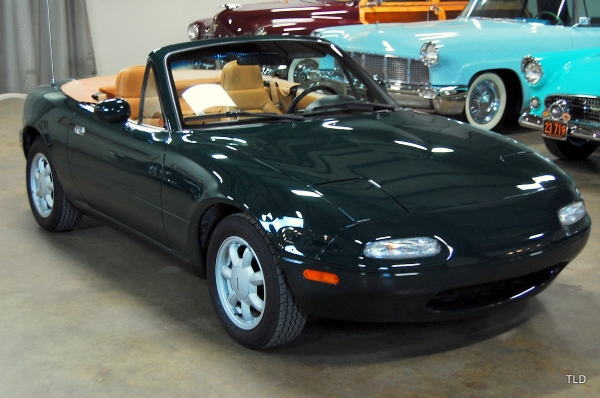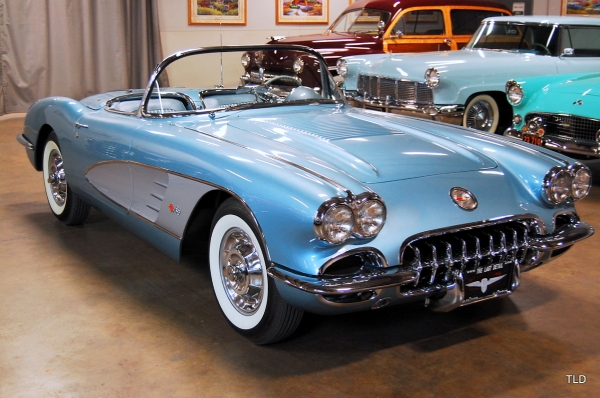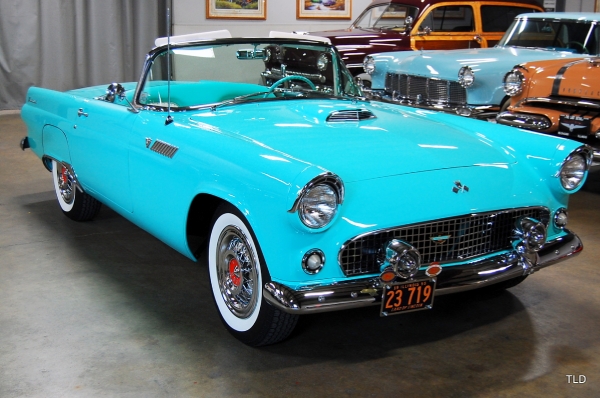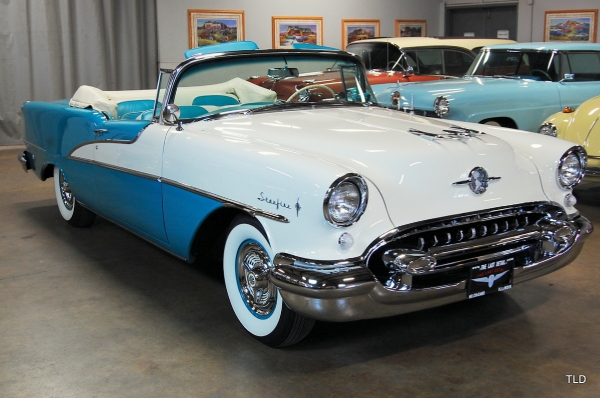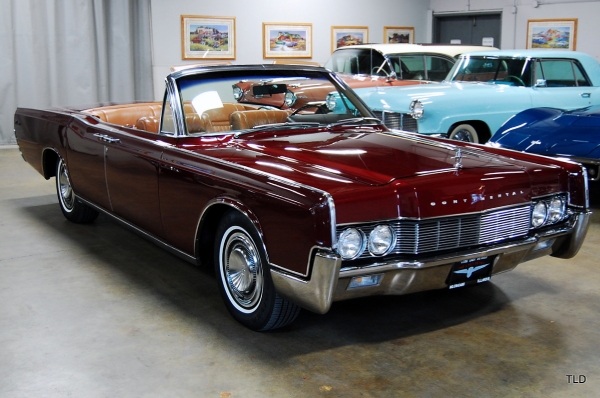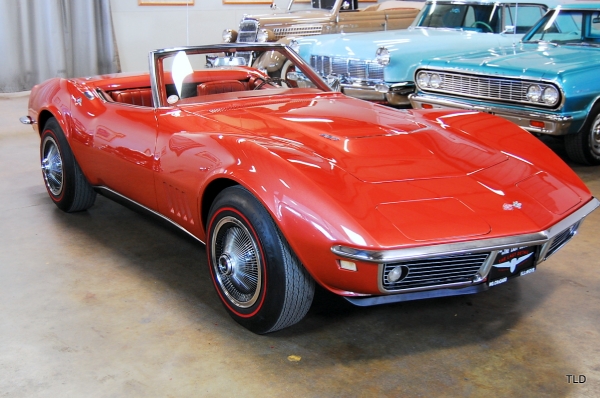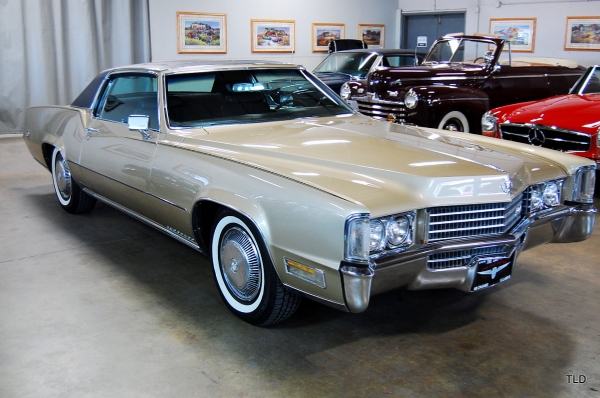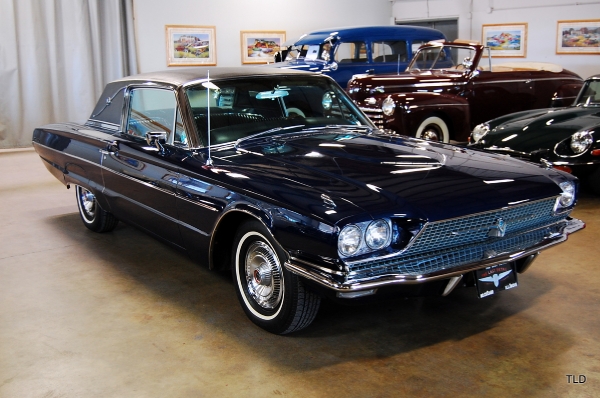This 1955 Pontiac Star Chief Convertible is one of more than 140 vehicles from the Ron Pratte Collection crossing the block at the Barrett-Jackson Scottsdale Auction in January.
This ’55 Pontiac Star Chief Convertible (Lot #2004) was given away by TV LAND in Hollywood and is fully restored as the car that appeared in the 4th season of “I Love Lucy.”
Episode 109, titled “Lucy Learns to Drive,” aired on January 3, 1955. In this episode, as part of a product placement deal with General Motors, the Ricardos buy a new car and Lucy wants to drive it around the block. After giving her one driving lesson, Ricky is a beaten man, but Lucy is so confident that she offers to teach Ethel Mertz how to drive and the result is a complete fiasco.
This same car was used in several subsequent episodes: Episode 110, titled “California Here We Come,” first aired January 10, 1955; Episode 111, titled “First Stop,” first aired January 17, 1955; Episode 112, titled “Tennessee Bound,” first aired January 24, 1955; Episode 113, titled “Ethel’s Hometown,” first aired January 31, 1955; and Episode 114, titled “LA at Last,” first aired February 7, 1955.
This 1955 Pontiac Star Chief Convertible (Lot #2004) will cross the auction block in Scottsdale on Tuesday, Jan. 13.
Ron Pratte’s prestigious collection of automobilia will kick off the 44th Annual Barrett-Jackson Scottsdale Auction beginning Saturday, Jan. 10 at 9 a.m. and running through Tuesday, Jan. 13 at 1 p.m. Pratte’s vehicles first cross the block at 4 p.m. on Tuesday with lot numbers 2000 through 2109 and will continue with lot numbers 2500 through 2530 on Saturday, Jan. 17.
This 1970 Plymouth HEMI ‘Cuda is one of more than 140 vehicles from the Ron Pratte Collection crossing the block at the Barrett-Jackson Scottsdale Auction in January.
After a complete rotisserie restoration of an original sheet metal ‘Cuda, this HEMI (Lot #2522) has been stored in a climate-controlled museum. During that time, this ‘Cuda was featured in Mopar Magazine and was proclaimed as “The Ultimate HEMI ‘Cuda.”
It is documented with a Broadcast Sheet and decoded by Galen Govier. The attention to detail is unsurpassed in every way. All of the factory production line markings have been authentically reproduced. Even the tension springs inside the brake drums are factory correct.
Other outstanding features include the high-impact B5 Blue paint, Shaker hood, Rally wheels, hockey stick stripe, road lamps, 727 TorqueFlite transmission, AM/FM radio and body “fish gill” rocker moldings. All of the glass, drivetrain and interior are original and matching numbers. With only 368 cars ever produced and only 30,130 original miles, this is likely the most well-known, rarest documented original HEMI ‘Cudas in existence.
This 1970 Plymouth HEMI ‘Cuda (Lot #2522) will cross the auction block in Scottsdale on Saturday, Jan. 17.
Ron Pratte’s prestigious collection of automobilia will kick off the 44th Annual Barrett-Jackson Scottsdale Auction beginning Saturday, Jan. 10 at 9 a.m. and running through Tuesday, Jan. 13 at 1 p.m. Pratte’s vehicles first cross the block at 4 p.m. on Tuesday with lot numbers 2000 through 2109 and will continue with lot numbers 2500 through 2530 on Saturday, Jan. 17.
December 30 – 1970 Plymouth HEMI Superbird
This 1970 Plymouth HEMI Superbird (Lot #2520)is what happens when outrageous horsepower and exotic aerodynamics are blended together in equal but generous portions. Designed to shut up the Ford and Chevy guys once and for all, the HEMI-powered Plymouth Superbird was built, if not destined, to dominate the superspeedways. Chrysler was required to make a certain number of these cars before NASCAR would recognize them as actual production vehicles.
Coincidently, the car remained a thorn in the side of NASCAR officials, and the drivers of other brands, during all of 1970. The Superbird and its Dodge partner won 38 of 48 major NASCAR races that year. This was certainly the most intimidating factory race car to ever grace the big ovals. And that’s exactly what they looked like they were doing at over 200 miles per hour. Superbirds were banned after that one year of stardom for the best reason and the worst reason of all: They https://premier-pharmacy.com/product-category/pain-relief/ were just too darn fast.
The often-quoted build figure is 1,935 and includes those powered by the 440 4 barrel, the 440 Six Pack and the Street HEMI. It is normally agreed that only 135 of these cars were delivered with the 426 HEMI. That puts this particular Superbird at the outer edges of the stratosphere on the desirability scale.
This 1970 Plymouth HEMI Superbird 2 Door Hardtop (Lot # 2520) will cross the auction block in Scottsdale on Saturday, Jan. 17.
December 30 – 1971 Plymouth HEMI ‘Cuda
This 1971 Plymouth HEMI ‘Cuda (Lot #2519) underwent a complete rotisserie restoration in 2006 with only original and NOS parts were used.
This car has traveled only 16,000 miles in its life. Original matching numbers throughout make it a blue-chip example of one of the most desirable classic muscle cars on earth. And all this from a car that was produced for only two model years. Only three Curious Yellow 1971 HEMI ‘Cudas were ever sold. Two of them were pistol-gripped 4-speeds, and this is one of those.
This 1971 model HEMI Barracuda also happens to represent the only quad-headlight version ever produced by the factory. The authenticity of this breathtaking example has been verified by Mopar guru Galen Govier. Naturally this specimen is listed in his official Chrysler registry.
This 1971 Plymouth HEMI ‘Cuda 2 Door Hardtop (Lot # 2519) will cross the auction block in Scottsdale on Saturday, Jan. 17.
December 30 – 1970 Plymouth HEMI ‘Cuda
This 1970 Plum Crazy Plymouth HEMI ‘Cuda (Lot #2026) is the best example of the breed you will ever find. A complete restoration of this unique 4-speed HEMI coupe has returned it to original glory. This matching numbers HEMI ‘Cuda is a magnificent example of the brand flaunting some of the smoothest curves ever applied to a muscle car. Its flat hood, combined with the ultra-classic argent silver shaker scoop, blends with lines over the roof and sides of the car in a way that was practically mesmerizing.
This third-generation Barracuda’s E-body architecture was actually based on a shortened B-body chassis. Its contemporary styling perfectly captured the excitement of the new decade on the horizon. It literally catapulted the Barracuda name from a decent-looking and reasonably quick second-tier pony car to a devastating bulldozer of the competition — all the while flaunting great style, extravagant horsepower and a classy menace.
This 1970 Plymouth HEMI ‘Cuda 2 Door Hardtop (Lot # 2026) will cross the auction block in Scottsdale on Tuesday, Jan. 13.


